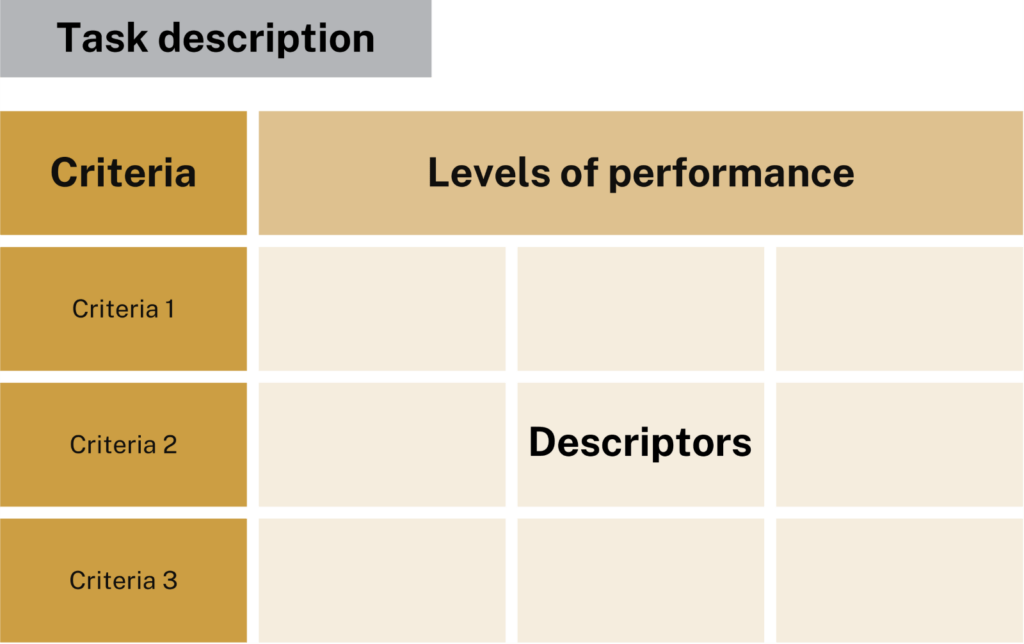A rubric is a useful tool for interpreting assessment and marking and often appears in a table or grid form. This resource explores the benefits of using a rubric and breaks down its four key elements.
The rubric contains a coherent set of criteria for students’ work which includes descriptions of the level of performance and quality on the criteria (Brookhart, 2013). There are different types of rubrics, purposes, and scoring strategies that can be used depending on the specific assessment context. Rubrics help communicate to students the specific expectations of an assessment and which criteria are used to judge their quality of performance.
Elements of a rubric
A rubric usually consists of four key elements, as shown in the figure below (adapted from Stevens & Levi, 2013):
- Task description – includes information about the assessment to be evaluated
- Criteria – are the skills and knowledge that students should demonstrate in the specific assessment task.
- Levels of performance – are the scale reflecting what students exhibit in relation to the task or specific criteria. Grades are often depicted across the scales.
- Descriptors – explicitly outline how well knowledge and skills are learned across the varying levels.
Well-designed rubrics are beneficial for both educators and students in many ways. Rubrics are not only tools to communicate expectations of assessment tasks; they also function as a learning opportunity for students.

Benefits of a rubric
For educators, rubrics:
- reduce marking workload (assessing and providing feedback)
- increase consistency and validity of marking
- strengthen alignment between assessment and learning outcomes
- give explicit indication to students what is valued in an assessment
- provide answers to students about how to achieve a desired goal
For students, rubrics:
- provide transparency in assessment expectations
- guide students in approaching the assessment task
- guide learning progress
- support self-regulated learning and reflection
- develop feedback literacy if students use them to critically evaluate work
References
Brookhart, S. (2013). How to create and use rubrics for formative assessment and grading. ASCD.
Stevens, D. D., & Levi, A. J. (2013). Introduction to rubrics: An assessment tool to save grading time, convey effective feedback, and promote student learning. Taylor & Francis Group.